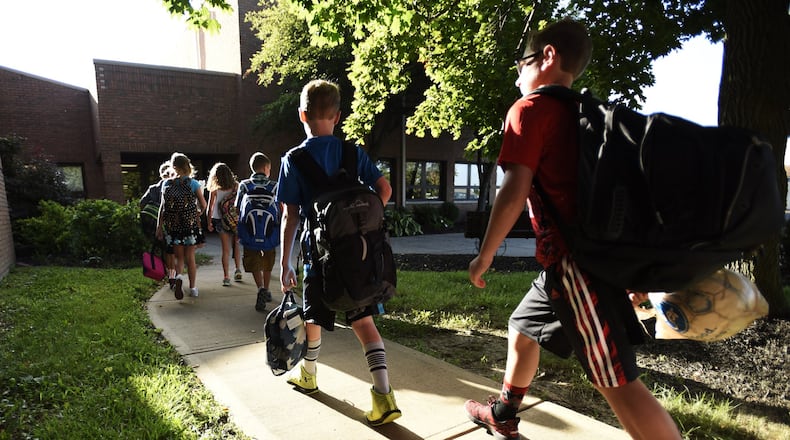But at the same time, Hamilton’s school board voted 5-0 at its meeting in support of the proposed tax hike, which was created as part of the formation of a new school taxing district now allowed under a recent Ohio law.
And in Fairfield Schools the board also unanimously approved joining the new tax district.
Moreover, officials from New Miami, Monroe, Ross and Edgewood schools have said they will also join the new tax district.
Hamilton’s meeting Thursday also included some heated criticisms directed toward the district leadership agreeing earlier this week to arm some school staffers in the coming school year.
The 16,900-student Lakota Local Schools and the 5,800-student Middletown Schools will not participate in the new school levy effort nor will Talawanda or Madison school districts.
Residents in the six participating districts are now a step closer to seeing the 10-year, 1.5-mill property tax increase on the Nov. 6 ballot.
Lakota’s board members said the new tax, which would have raised $4.4 million annually if approved by voters, isn’t needed and the school system is already improving security and has the funds to do so without a tax hike.
Lakota Board of Education President Julie Shaffer said, “the safety and security of our students and staff is always our top priority at Lakota.
“Even without the potential revenue generated by this levy, we will continue to build upon the strong security measures already in place throughout the district. Our decision to withdraw from the county-wide levy stems from Lakota’s healthy financial position and long-term outlook,” said Shaffer.
Fairfield Superintendent Billy Smith said the new tax money — if approved by voters — would “raise $2.1 million (annually) for the district, be used to provide school resource officers in all schools.”
“Providing a safe and secure environment for our kids, staff members and community members is a top priority,” said Smith.
NEW SCHOOL SECURITY TAX CLOSER TO BALLOT
The next step in this new taxing process, explained Chris Brown — superintendent of the Butler County Educational Services Center (BCESC), which is the supervising body for the new taxing district — is a vote by the governing board of BCESC on July 11 to put the tax on the ballot.
Only residents in the six participating districts will be able to vote on whether they want to raise their property taxes to help pay for more security in their local schools.
Residents in Lakota, Middletown, Talawanda and Madison schools will not vote nor receive any money from the school security tax issue.
These districts, however, do have the option of joining the taxing district in the following years — a possibility Middletown school officials said they may later consider offering to its residents.
“We’re happy six districts are in right now,” Brown said.
“I don’t fault the districts that aren’t in,” he said, adding that each district’s finances and relative security measures to date guided their decisions.
Officials at the Butler County Auditor’s Office said should the 1.5-mill tax win voter approval among Hamilton, Fairfield, New Miami, Monroe, Ross and Edgewood residents, they estimate on average the levy would raise the annual tax costs for the owner of a $100,000 home by about $52.
The tax would begin to be collected in 2019.
Butler County is only the second among Ohio’s 88 counties — the other is Stark County in northern Ohio — to pursue the new school security taxing option that became law in March.
Staff writer Jackie Osborne contributed to this story.
About the Author
